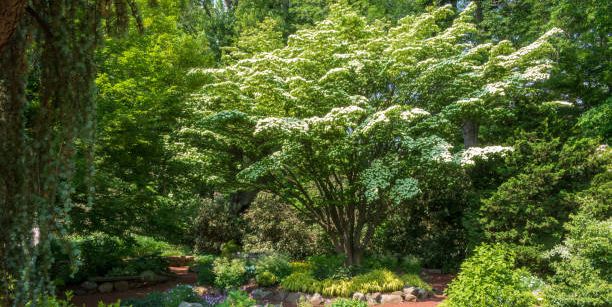Table of Contents
When you have a quaint little garden, it is only justified to the desire to have small compact trees to be grown. But does that mean that one has to compromise on beauty? Well, no! You can plant trees in your garden that can be maintained and contained in your little garden.
Below is a list of small trees that can be tucked away in the corners of your small garden, each more beautiful than the one previous to it.
Best Trees For Small UK Gardens
1. Japanese Maple
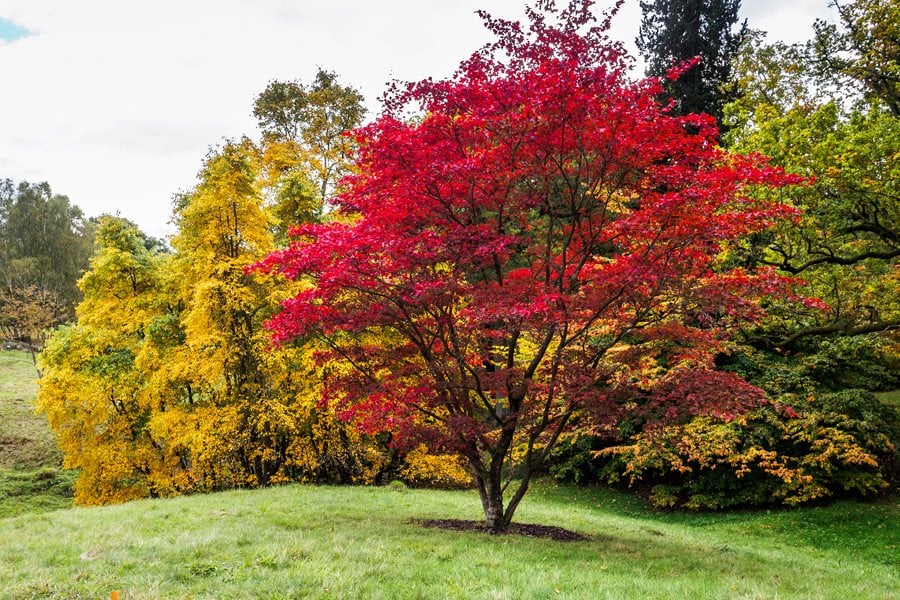
Japanese maple is a prized deciduous to have in your garden. The foliage is what makes the plant rather unique. The leaves display various colors like red, rust, orange, green, pink, purple, and white. Just like any other maple, a Japanese maple shed all the leaves during autumn and sprout fresh young leave at the dawn of spring.
They tend to grow about two feet every year and eventually grow up to 30 feet. But you can prune and cut the branches to keep them in control of your hands. If the height intimidates you too much, try growing them in a terracotta pot as a bonsai.
Taking care of the Japanese maple is not a taxing job if you take care of just a few little things. Give a good shower once a week, and abundant the sun works great! Since the winter is a bit too harsh, you might need to take a bit of extra care so that your tree doesn’t take any serious damage from the biting frost.
2. Red Cascade
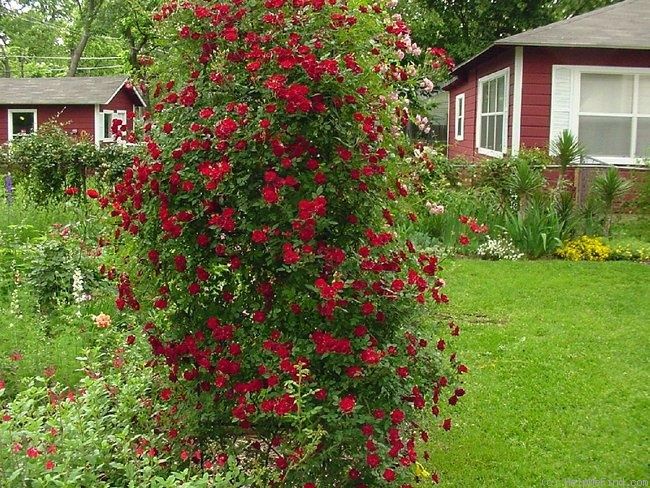
This enchanting tree is perfect if you are a bit tight on the space. Some say it’s a bush, but it’s decently tall enough to be called a small tree. You can prune and trim the tree during fall time to keep it in shape and give it a chance to maintain its aesthetics. Red Cascade is commonly known as Spindle since its wood is used for making spindle, knitting needle, and toothpicks.
Apart from the wood, it bears beautiful red berries. Should you eat them? If you don’t have a death wish, better you keep a safe distance. Those berries are toxic to both you and your pets. This evergreen tree is low maintenance and, you’ll rarely need to water it. It works perfectly for hedging, and with the toxic berries, you can keep your nosey neighbors at bay!
3. Gold Star
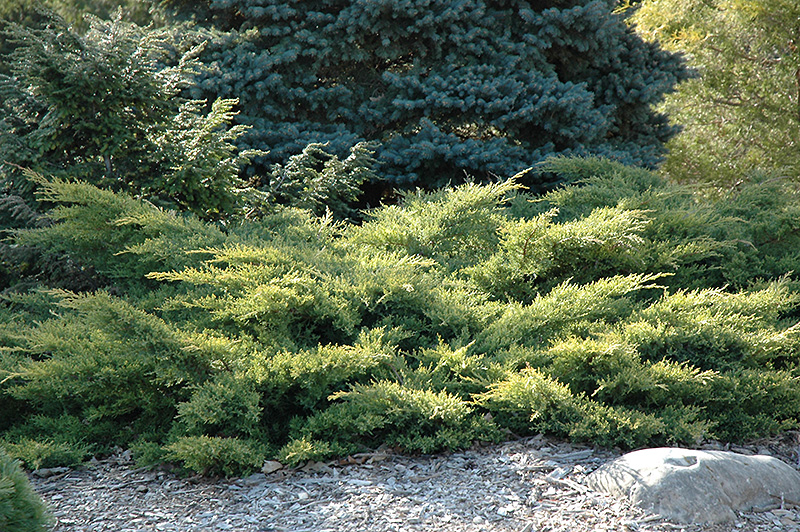
The gold star is a deciduous broadleaf tree that bears beautiful white flowers. The leaves are dark green and have a bright yellow patch right in the middle. The tree usually has a crown covered in young foliage during spring and summertime. But, during fall, the tree takes on a burgundy red, rust, or purple color.
During late summer, it bears delicious edible fruits. The Gold Star grows well in rich, moist, and well-draining soil. Water and mulch your tree and, you’ll see your tree with a head full of flowers in no time. It is advisable to use fertilizers to encourage good flowering and, it also helps to maintain the color of the leaves.
4. Forest Pansy
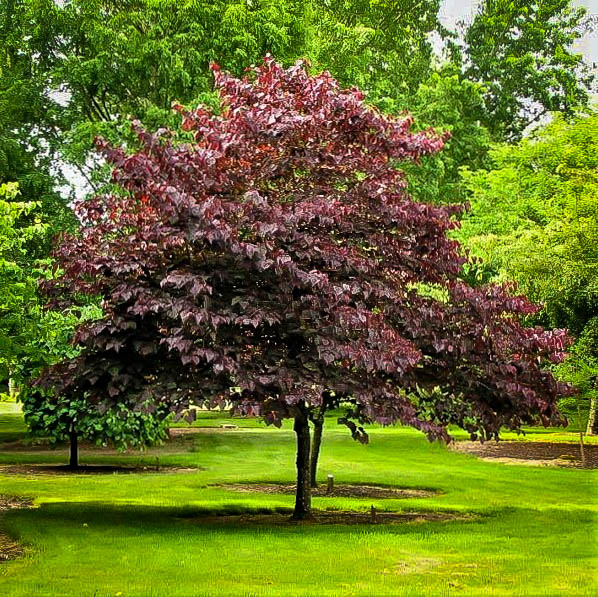
Forest pansy or Eastern Redbud is a flowering deciduous tree that has beautiful leaves. It is a bit tall and widespread, so if space is not an issue, this is THE tree for you. It can grow up to 30 feet if you let it unwind on its own. But you can try and keep it small by regular pruning and trimming.
During fall, the leaves turn purple or orange and, in spring, the branches are adorned by beautiful flowers. In summer, you will get to see the foliage, which is equally impressive. Forest Pansey attracts a lot of hummingbirds and other garden animals. To keep your Pansey healthy, make sure you fertilize, water, and prune often.
5. Joseph Rockey
Origin of Joseph Rockey is a mystery. It is a hybrid of two unknown plants, and, just like any other deciduous, the tree sheds its beautiful autumn leaves and starts afresh in spring. It bears beautiful orange and yellow fruits that stay on the branches till mid-December.
Since the tree is not toxic to humans and animals, it attracts many birds and garden animals who feast on fruits. It can resist wind and stands tall and proud throughout frosty winter. The fruits end up looking like jewels on the bare branches in the snow-covered garden. Just keep an eye out for bacterial fire blight and, you’ll be fine.
6. Mattfru
Mattfru is well known to all of us as Crab Apple or Jelly King. This deciduous tree blooms pure white flowers during spring and ornamental fruits during autumn. Those orangish fruits with pink and red flush are edible and perfect for jelly making. Plant your tree in a sunny spot with fertile land which is moist and well-draining.
It reaches its full height in 10 to 15 years and stands at the height of 4 meters or so. They do attract red spider mites and caterpillars, so keep an eye out for that. They also suffer from apple scab, honey fungus, blossom wilt, and apple canker.
7. Snow White
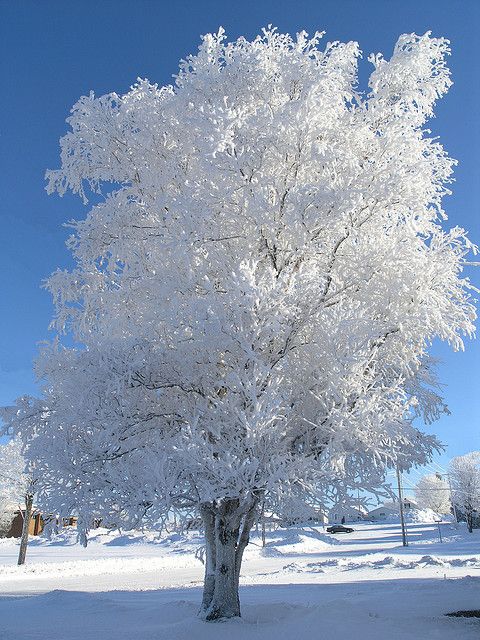
This tree is nothing less than a princess out of the fairytale. During spring and summer, the crown is covered with a blanket of white majestic flowers. Each flower has five petals and is shaped like a saucer. The buds resemble that of a small pearl.
The tree tends to turn into a triangular shape but can splendidly be used as a hedge if pruned. It grows up to a height of 5 feet and is almost disease-free. The root might root if proper care is not taken. Prune only after flowering to encourage vigorous growth.
Do not gnaw at the bare bark as it may stop new leave from sprouting. You may take off a few from around the lower portion of the trunk to give the tree a more prominent crown. It does have tolerance towards drought and deer and attracts abundant butterflies to call your garden an enchanted one.
8. Induta (Dwarf Horse Chestnut)
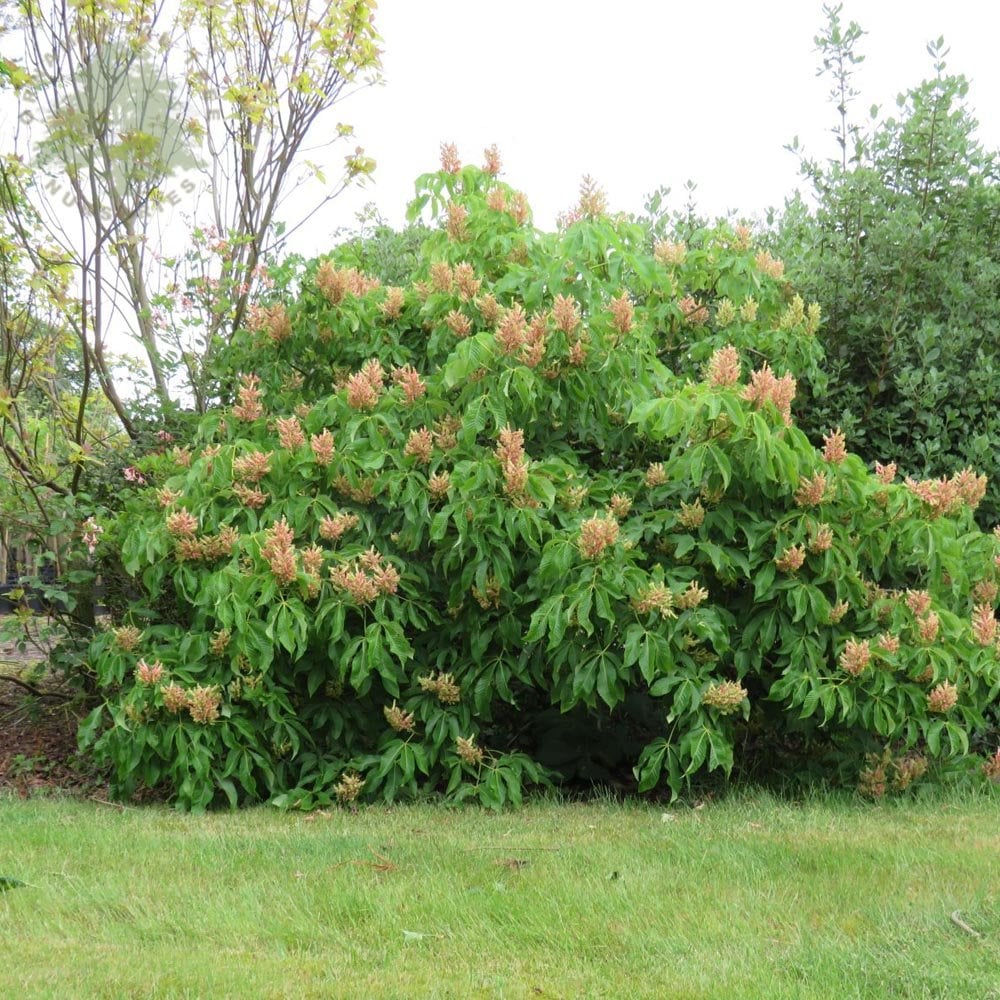
A dwarf horse chestnut tree is a sporting plant that can flaunt in all kinds of gardens. It comes to a spread of 2 to 3 meters in both height and width within 20 years. Apart from winter, all the seasons are of interest when it comes to this plant. It emerges with pink foliage and soon turns dark green. Just before losing their leaves in fall, they change the color to orange. Not only the foliage but the splendid apricots and upright flower will as well steal your heart.
You can plant this wonder in your garden any time of the year. Make sure you take out the weeds and grass from the surrounding area. Place some compost at the foot of the tree and water well for the first few years. Induta doesn’t require much pruning. But if you wish to prune your tree to maintain a look, it is advisable to be done during the dormant season.
You might wonder what the use of the beautiful fruit that it bears is. Well, you cannot eat a horse chestnut but, it is of medicinal value. They may not be used to you but, it does keep the spiders at bay. Bleeding canker is a common disease that the tree can catch. Do lookout for the symptoms as there is no coming back.
9. Jane Platt
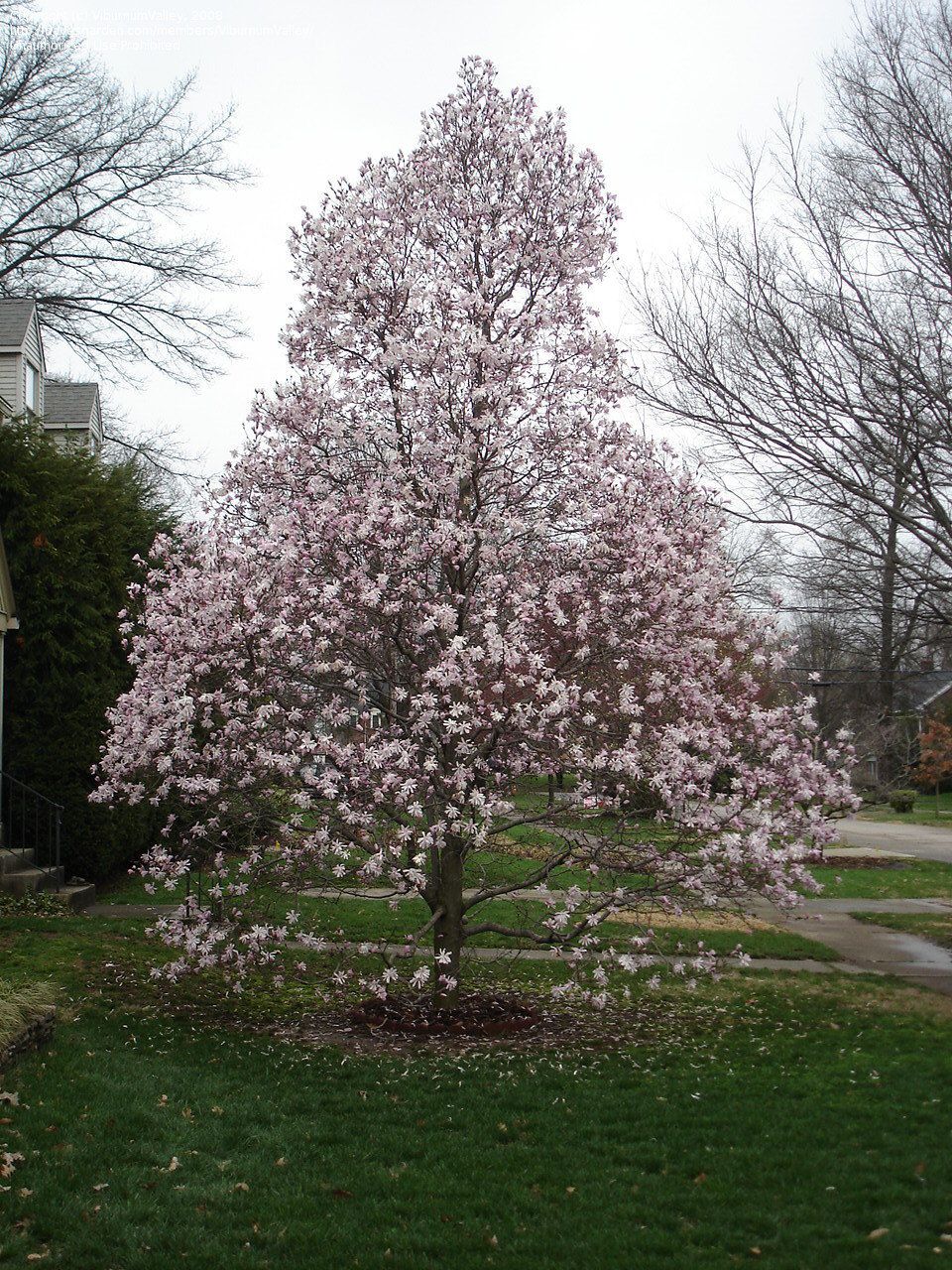
Jane Platt, regarded as one of the prettiest pink flowering magnolias, won quite a few awards. The deciduous plant bear sweet-scented pale pink flowers around mid-spring, making it the season of interest. If you are looking for a flowering tree that will catch the attention of all the passers-by? Plant this tree in your garden with your eyes close, and you will be able to enchant the enchantress herself.
If you are to prune your tree, make sure you do it during the summer when the leaves are fully displayed. When the weather becomes harsh and windy during winter, try to shelter your tree, as it may damage your tree permanently.
Make sure you save your buds from harsh wind and late frost since the tree is mostly prized for its beautiful blooms. The tree grew well in moist, well-draining, and fertilized soil. They are susceptible to scale insects, coral spots, and honey fungus. Make sure you mulch and water the tree well for the first few years.
Hopefully, after going through the list of the beauties above, one has caught your eyes. No matter what plant you choose for your garden, it is love and care that makes all the trees shine in our garden. Happy gardening!

